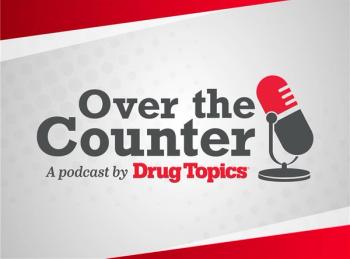
Drug Promotion on Social Media Lacks Risk Information
Key Takeaways
- Social media is a growing platform for undisclosed prescription drug promotion, raising patient safety concerns.
- The 1997 "adequate provision" loophole in DTCA regulations led to increased public deception and confusion.
Researchers explore highly engaged social media posts related to glucagon-like peptide-1 receptor agonists, attention deficit/hyperactivity disorder stimulants, and autoimmune biologics.
Individual content creators are promoting a variety of prescription drugs at a significantly frequent rate without necessary information regarding medication risks, according to a study published in JAMA.1 Highlighting the potential dangers of social media as well as direct-to-consumer advertising (DTCA), these findings present the need to address undisclosed marketing behaviors and the dangers they’re beginning to pose to patients.
“Appreciating the regulatory and reputational risks of consumer engagement on social media, the pharmaceutical industry has gradually increased promotional activities on social media since its inception,” wrote authors of a study published in the Journal of Pharmaceutical Health Services Research.2 “Evidence of harmful content and promotional activities that have become more covert and targeted suggests the need for regulatory development.”
Evolution of DTC Advertising for Drugs in the US
Indeed, since the late 1990s, DTCA for prescription drugs has been swamped with controversy. While the ability for drug manufacturers to advertise their products was never prohibited in the US, it’s been historically regulated by the FDA. According to them, all DTCA must be accurate and not misleading.3
However, much of this changed in 1997 when pharmaceutical companies discovered what the US Department of Health and Human Services calls the “adequate provision” loophole, allowing manufacturers to advertise without fully disclosing side effects or patient harm.4
Since the discovery of the loophole, HHS claims DTCA for prescription drugs exploded after 1997, leading to public deception, patient confusion and harm, inappropriate demand for products, and harm to public finances.
READ MORE:
Drug Advertising on Social Media
While entities within the federal government are attempting to address these DTCA concerns, similar issues are now reaching a boiling point on social media.
“Although the First Amendment broadly protects expression on social media, current FDA and Federal Trade Commission (FTC) regulatory frameworks have primarily focused on paid advertisements, with limited application to user-generated promotional content,” wrote the authors of the JAMA study.1 “These factors underscore the complexities inherent in regulating digital pharmaceutical marketing.”
Government entities may have a solid grasp on regulating the advertisements of large, certified drug manufacturers. However, regarding their insights into millions of individual social media users across multiple platforms with millions more users, regulation of social media content is a much more difficult challenge. Add in the rise of influencers and the increased risk of hidden advertisements, millions of patients could be encouraged to seek out drugs that have detrimental impacts on their health.
“While precise figures vary, multiple investigations and reports reveal a significant portion of sponsored content goes unlabeled,” wrote Data Insights Market News.5 “Consumers are constantly bombarded with seemingly organic content that is, in fact, carefully crafted marketing material.”
DTC Advertising for GLP-1s, ADHD Drugs, and Autoimmune Biologics
To navigate this “hidden” marketing material and get a better grasp of DTCA on social media, researchers conducted a study that provided empirical evidence on high-engagement social media posts discussing glucagon-like peptide-1 (GLP-1) agonists, attention-deficit/hyperactivity disorder (ADHD) stimulants, or autoimmune biologics.1
With the goal of assessing social media ads and their alignment with FDA and FTC regulations, the researchers’ primary outcome was the potential for undisclosed influencer promotion of one of the aforementioned drug classes. The study design consisted of a cross-sectional content analysis of public Facebook, Instagram, TikTok, and YouTube posts from the year 2023.
The main outcome was further defined as “content from patient, influencer, or health care creators that contained marketing elements (eg, promotional language, calls to action) but without clear commercial disclosure,” they continued.1
Researchers identified a total of 740 high-engagement social media posts across various platforms. Constituted as high-engagement because of the popularity of the posts, each one had amassed over 57.5 million views by January 2025. Patients or consumers (65.9%) and lifestyle or celebrity influencers (42.7%) were the most frequent source of drug-related content. Pharmaceutical company accounts comprised just 4.5% of all posts.
“The current analysis illustrates that drug promotion content is frequently posted by individual creators, lacks essential risk information, and bears the hallmarks of undisclosed marketing,” wrote the authors. “These findings suggest that posts circumvented established advertising principles and potentially eroded the fair balance crucial for informed patient decision-making, consistent with prior literature on traditional DTCA’s impact on prescribing.”
With users describing drugs as “life-changing” or “revolutionary,” 23.6% of the social media posts explored contained promotional language. On the other hand, the number of posts mentioning specific sponsorship disclosures was just 16, or 2.2% of the 740 posts. Finally, they found that efficacy claims were made in 69.1% of posts and risk information mentioned in just 33.4%, leading researchers to agree that these posts create a “skewed information environment for patients.”
However, with social media use continuing to boom, researchers are still skeptical as to what the best approaches are for future observation of the challenges stemming from DTCA on social media.
“While the federal government has proposed expanding oversight to include influencer partnerships and sponsored content, effective oversight will be challenging because promotion is driven by thousands of individual creators rather than a few dozen companies,” they concluded.1
READ MORE:
Are you ready to elevate your pharmacy practice? Sign up today for our
REFERENCES
1. Kresovich A, Tran H, Shi H, et al. High-engagement social media posts related to prescription drug promotion for 3 major drug classes. JAMA. November 13, 2025. doi:10.1001/jama.2025.19754
2. Mor J, Kaur T, Menkes DB, et al. Pharmaceutical industry promotional activities on social media: a scoping review. JPHSR. 2024;15(4). https://doi.org/10.1093/jphsr/rmae022
3. Background on drug advertising. FDA. June 19, 2015. Accessed November 14, 2025. https://www.fda.gov/drugs/prescription-drug-advertising/background-drug-advertising
4. Fact sheet: ensuring patient safety through reform of direct-to-consumer pharmaceutical advertisement policies. News Release. HHS. September 9, 2025. Accessed November 14, 2025. https://www.hhs.gov/press-room/hhs-fda-drug-ad-transparency-fact-sheet.html
5. Hidden influencer ads: the alarming truth & how to spot them. Data Insights Market News. May 2025. Accessed November 14, 2025. https://www.datainsightsmarket.com/news/article/hidden-influencer-ads-the-alarming-truth-how-to-spot-them-29080
Newsletter
Pharmacy practice is always changing. Stay ahead of the curve with the Drug Topics newsletter and get the latest drug information, industry trends, and patient care tips.














































































































































